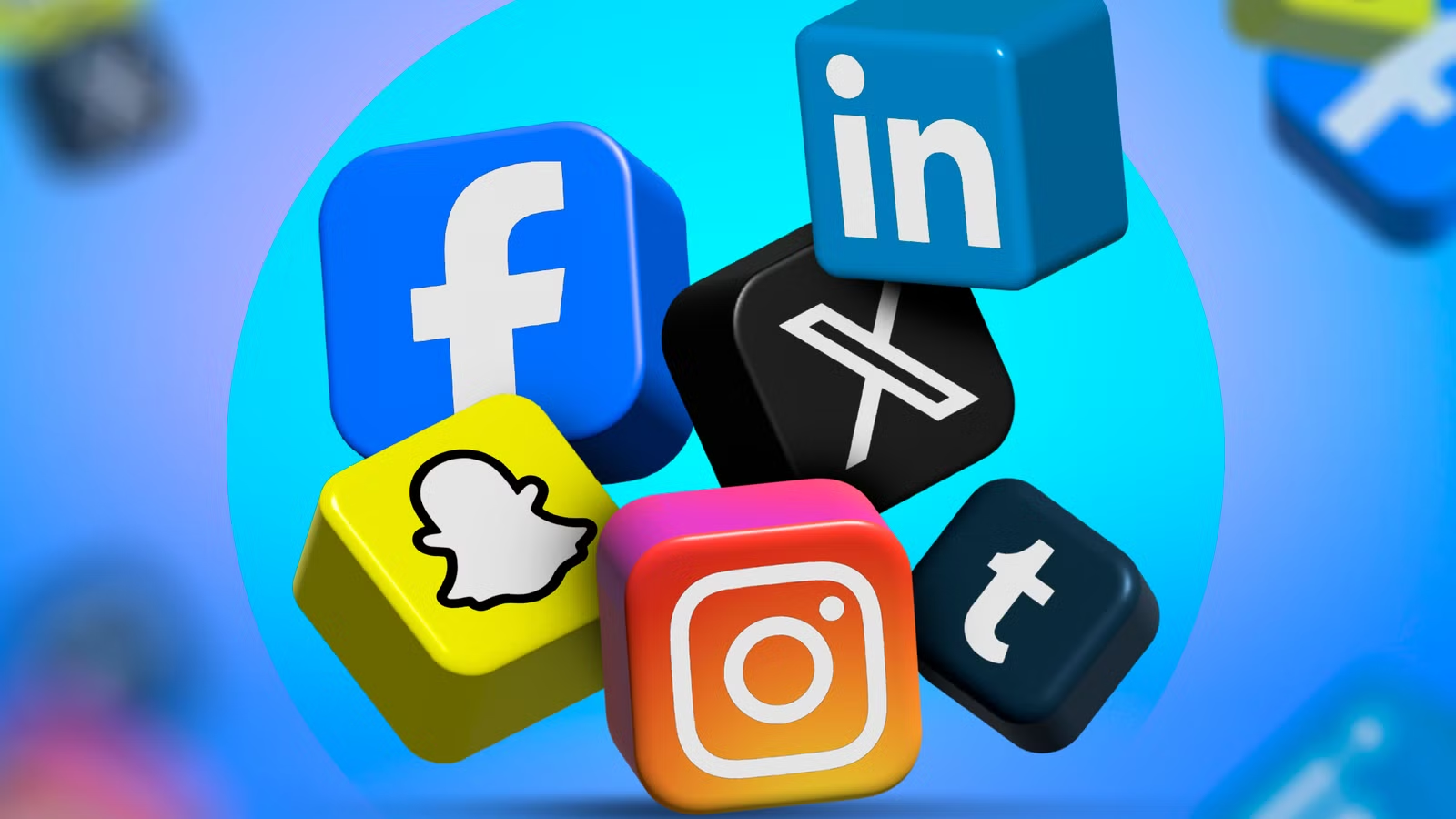Social media is a powerful tool for interactions, sharing information, and building relationships. If you’re looking to share an experience with family or friends, or even in a professional setting social media apps meet every need. The creation of a social media application requires the inclusion of a variety of options like feeds, profiles, sections for messages, notifications and a host of other features.
In recent times, Flutter, an open source UI toolkit created by Google has evolved into an extremely effective solution to Social media application design. Flutter can make the process much easier because it provides developers with everything they need to create a great application that runs on every platform.
Features of Popular Social Media Apps
In a survey conducted from Statista, Flutter is a top option for 46 percent of developers. To evaluate the potential for Flutter in the field of social media app development, you need to think about the features that affect the performance of these apps:
1. Feeds
The basic concept behind social media applications is the feed that is a carefully curated collection of content posted by your friends, followers or other subscribed channels. They aim to grab the attention of users through the display of posts, pictures or videos and other updates in real-time. Thanks to algorithms, users receive feeds that are recommended that are based on their preferences and past activities to ensure everybody has something interesting to interact with.
2. Profiles
Profiles allow a person to establish their identity and connect with others. A profile is typically comprised of a profile image along with a brief description of the user’s profile, posts and an activity log.
They’re a way of communication that allows users can share content that is related to their interests, hobbies and even friends. Additional features such as the themes as well as privacy options contribute an experience for users and can be helpful in establishing a persona.
3. Messaging
Messaging is an essential tool that allows users of the application to communicate with each other in an anonymous manner. It includes text messaging and audio messages, multimedia sharing as well as video call.
A good messaging platform allows you to send messages and messages to users within the shortest period of time. Features like reading the receipt, bubbles for typing and encryption that goes all the way to the end increase the user’s experience and protect their privacy which makes it a vital part of the app’s communication.
4. Notifications
Notifications alert users to new actions, messages, and updates, and encourage users to revisit the application. These can include push notification or app-based notifications that ensure users don’t lose any crucial interactions.
Users can select which notifications they want to receive, which will improve the user experience through controlling how often notifications are sent out as well as notifying users whenever certain actions are completed.
The benefits of using Flutter to create Social Media Apps
1. Real-Time Updates
Flutter’s architecture allows real-time data synchronization meaning that users will be updated at a rapid pace. This is especially important for social media applications that need accurate information.
Flutter, as a default, includes a number of widgets and other tools that allow developers integrate these features easily and enable them to function instantly. This helps to make user interaction greater as the content is more dynamic and up-to-date and essential in keeping users engaged and content.
2. Push Notifications
Push notifications are supported in Flutter and help users keep their attention by alerting them to new messages or comments, likes and more. In addition, Firebase Cloud Messaging or other notification service can be integrated using notifications that is easily managed through the developer.
This ensures that users are updated about various interactions, thus increasing the number of users as well as the retention rate of app because users are constantly notified to return to the app.
3. Customization
With such a wide range of widgets that can be customized, Flutter empowers developers to create new UI designs. This flexibility is crucial when it comes to designing distinctive social media application developmentprojects with the most enjoyable user experience. Each element of the user interface are customizable to reflect the brand’s image and user’s preferences.
4. Cross-Platform Development
Flutter allows developers to develop applications that work on both the iOS as well as Android platforms from the same codebase. This helps save time and money during the development process, while offering a consistent interface to users across all devices.
This approach unifies will not only speed up development time, but also ensures that all interfaces and features are consistent across all platforms. One of the benefits you can expect when you employ Flutter developers is the capability and experience in the development of cross-platform apps that are well-integrated.
Building an Efficient and Scalable Backend Architecture
1. Choosing the Right Database
The selection of the right database is crucial when working with huge amounts of user information messages, posts, posts or media data. Examples include MongoDB and Firebase Firestore due to their capacity to accommodate and scale the different types of data used in social media apps which use structureless data. They also allow fast read and write operations that are essential in real-time processing of data.
2. API design
It is vital to design well-organized APIs since this communication happens between the front and back end. To design an endpoint that is clean and easy to scale, developers usually utilize RESTful APIs, or GraphQL. These APIs allow operations that rely on CRUD and also provide consistency in data and security whenever multiple requests occur. These requests originate from users.
3. Server infrastructure
A robust server framework is essential to manage the huge volume of volumes of data and traffic that are that are generated by social media applications. Cloud providers like AWS, Google Cloud, or Azure provide server scalability with load balancers and auto-scaling. These features help keep the application fast and effective even in high-traffic times since the data is distributed across several servers.
4. Security
It is vital to ensure safeguards are set in place to protect user data and maintain their confidence. This includes data encryption while it is being stored or transmitted as well as secure authentication for users like OAuth, as well as security evaluation.
The compliance with laws regarding data protection such as GDPR or CCPA is crucial to the success of your project. Updates scheduled and patches can lower risk and shield against risks or exposures.
The design of social features to promote interaction and participation of users
1. User-friendly Interface
A clean and simple layout is crucial for users to feel comfortable with the website. Flutter comes with a huge selection of widgets and a myriad of options to allow the creation of appealing and user-friendly layouts.
The elements should be arranged in a natural, easily accessible way to allow users to use the interface without much effort. An easy navigation system, an adaptive design, and attractive look allow users to stay on the internet and allow them to be more engaged with the application.
2. Gamification
The inclusion of gamification functions like badges or scores, as well as gifts can make users more interested in the application since it is fun to compete against other users. These features help users take more time, complete tasks, and return to play more.
The built-in widgets of Flutter allow for the integration of gaming features that enhance user experience and increase their engagement. Alongside engaging users, gamification improves the feeling of belonging and accomplishment.
3. Personalization
Personalization alters the app’s behavior to reflect the personal preferences or actions that the users take, making it always more engaging. By using information, the application is able to recommend content, suggest friends to be recommended, and even alter feeds to meet the preferences of the users.
Due to the extremely flexible Flutter framework, it’s easy to modify the contents and personalize the interface to each user to make them feel unique. Personalization boosts engagement of users and improves retention of customers. This is the reason why companies should engage Flutter developers.
Implementing Features such as Chat Groups, Live Streaming
1. Chat
Flutter provides a variety of applications and plug-ins that allow you to incorporate chat features into applications. The addition of options such as immediate messaging, sharing content from media as well as push notifications are possible to build a robust chat platform.
2. Groups
The group lets users create communities with people who are similar to them. Group features include group messaging, events and documents. The group’s interactions are effectively managed by using tools such as Provider or Bloc provided by Flutter.
3. Live Streaming
Many social media platforms incorporate live-streaming capabilities. Flutter comes with a variety of plugins and third-party services that enable users to stream live by broadcasting videos and engaging with the viewers in real-time.
Case Studies popular social media apps built using Flutter
1. Reflectly
Reflectly is a program which guides users through the process of rethinking your thoughts, feelings and ideas through artificial intelligence. The application was developed by using Flutter and has stunning as well as immersive interface for users showing the strengths of Flutter when it comes to creating social applications.
2. Hookle
Hookle can be described as an app that allows for the organized administration of multiple social media accounts within one app. By nature, it is cross-platform. Hookle was developed with Flutter to show its capability to handle complex social media interactions efficiently.
3. SpaceX Go!
SpaceX Go is an application specifically designed for those who are who are interested to SpaceX launch, mission and other occasions. Although SpaceX Go is not considered an application for social media but it makes use of Flutter’s live-time data functions to communicate and engage users.
Resources for Learning More
Are you interested in the development of apps using Flutter or you’d like to increase your knowledge on Flutter, here are some sources you might be able to use:
1. Tutorials
- Official documentation for Flutter Full instruction and training content on Flutter.
- Udemy as well as Coursera online courses on the Flutter development.
- YouTube channel The following instructions are through The Net Ninja and Flutter Community channels.
2. Development Forums
- Stack Overflow one of the most popular forums for seeking help in coding issues.
- Flutter community So, to further your education, join in Flutter Community members on Flutter Community via Reddit Discord, Reddit, or Slack to talk about and exchange ideas.
3. Best practices for the community
- GitHub repository Visit GitHub to explore open-source projects. You can see the way other people approach the problem and what standards they’re employing.
- Articles and blogs For the latest information, ideas, and tips on Flutter, visit blogs like Medium’s Flutter Community.
Conclusion
In the midst of many frameworks that are available, Flutter is the most ideal for creating apps for the social web as it has features such as instant updates and push notifications as well as a wide range of personalization.
It’s a great cross-platform app that allows it to work reliably on a variety of devices and makes it a fantastic instrument for connecting people from all over the globe. The hiring Flutter’s services for app development will allow you to get professional assistance to fully appreciate the full potential of the framework, eliminate any flaws in the process, and achieve the best results.

